With 100M+ registered users, 80 million products offered across more than 80 categories, and approximately 8 million shipments made per month, Flipkart—India’s largest eCommerce website—was losing customers and experiencing a high level of app uninstalls. It was clear that the team needed to come up with a new strategy to retain customers, so we set out to redesign the Flipkart app’s user experience.
It was critical to review the UX strategy and come up with a solution that would focus on designing a habit-forming user experience, have a substantial impact on users, and generally:
- Engage customers more effectively
- Elevate the brand
- Ignite growth
Online shoppers are notoriously price conscious. Customer loyalty is fleeting—most of the time, they don’t care which site they buy from, only that they are getting the best deal possible.
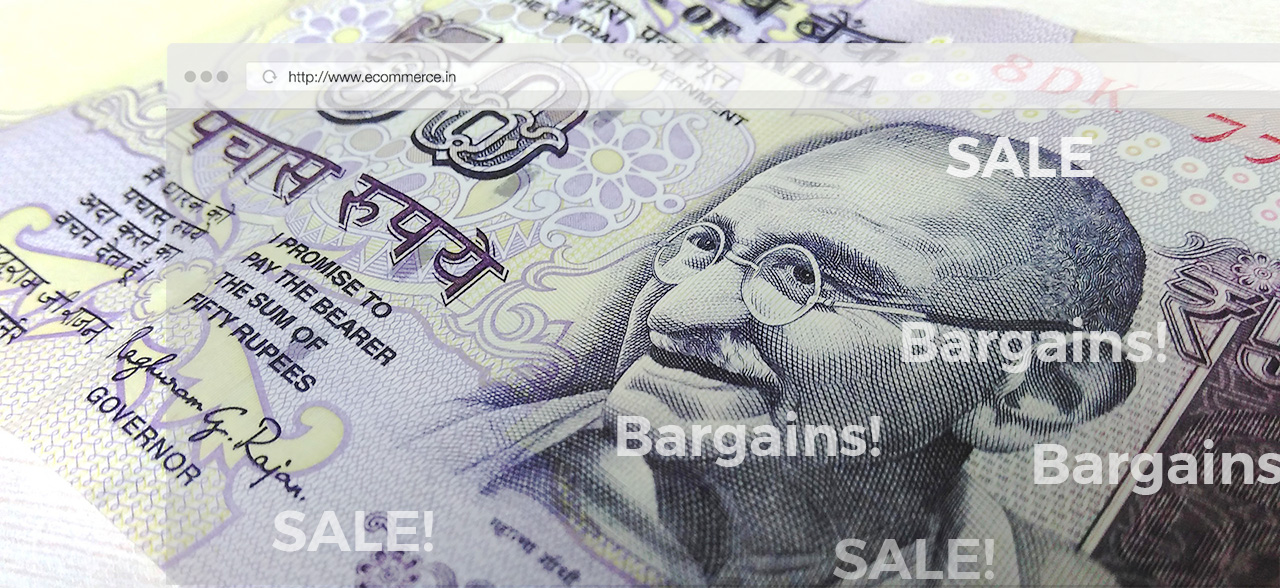
It was essential to keep asking questions:
- How do you get consumers to choose your eCommerce site first?
- How do you convince shoppers to check out your offerings before comparing them against competitors—to check out your deals and then make a purchase?
These were a couple of the issues plaguing the UX product design team at Flipkart. What follows is how we went about dealing with it.
Gaining Insight by Asking Smart Questions
It became obvious that gaining insight into consumer sentiments, trends, and shopping habits was critical to understanding the constantly shifting online shopping landscape and the capacity to optimize the customer experience.
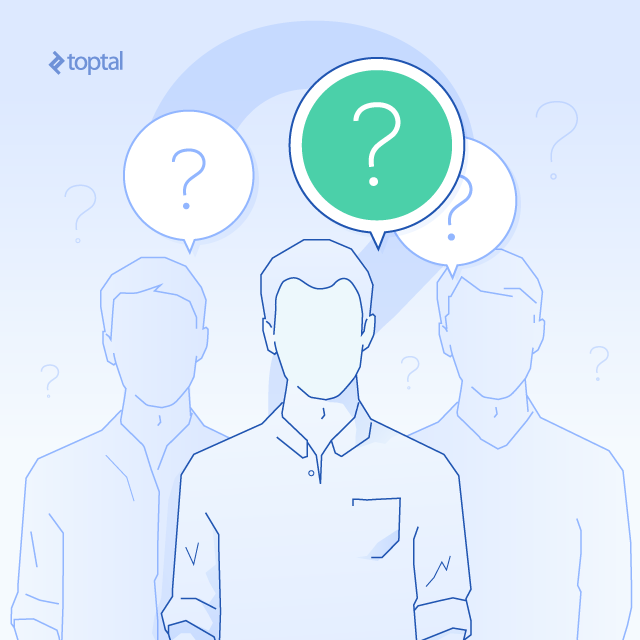
By repeatedly asking the question “Why?”—five times is a good rule of thumb—you can peel away the layers of symptoms which conceal the root cause of a problem.
The Flipkart team continued to ask themselves these questions:
- How do you build a loyal customer base and increase engagement?
- What behaviors should be studied in order to come up with a winning solution?
- How do you build a superior shopping experience that curbs the instinct to bargain-chase and provides something of lasting value that keeps customers coming back time after time?
- And—last, but not least—how do you solve the issue of app uninstalls?
Collaborating with another UX designer over many brainstorming sessions, we came up with a simple pitch for re-thinking the UX and making a subsequent redesign of the Flipkart app.
The core of the solution was to design a habit-forming experience that stood in stark contrast to the usual eCommerce app experience.
But first, it was necessary to acknowledge a couple of basic challenges.
Challenge No. 1: App Uninstalls
Mobile users have a fragile relationship with apps: They love a few that they tend to keep forever but uninstall a majority of those they download. Here’s a surprising statistic: 77 percent of users never use an app again 72 hours after installing. This presents a challenge for designers to get people to fall in love with their apps during that crucial first week.
The most successful apps are those that have good behavioral design—those ‘sticky’ apps that people use on a regular basis and can’t imagine life without.
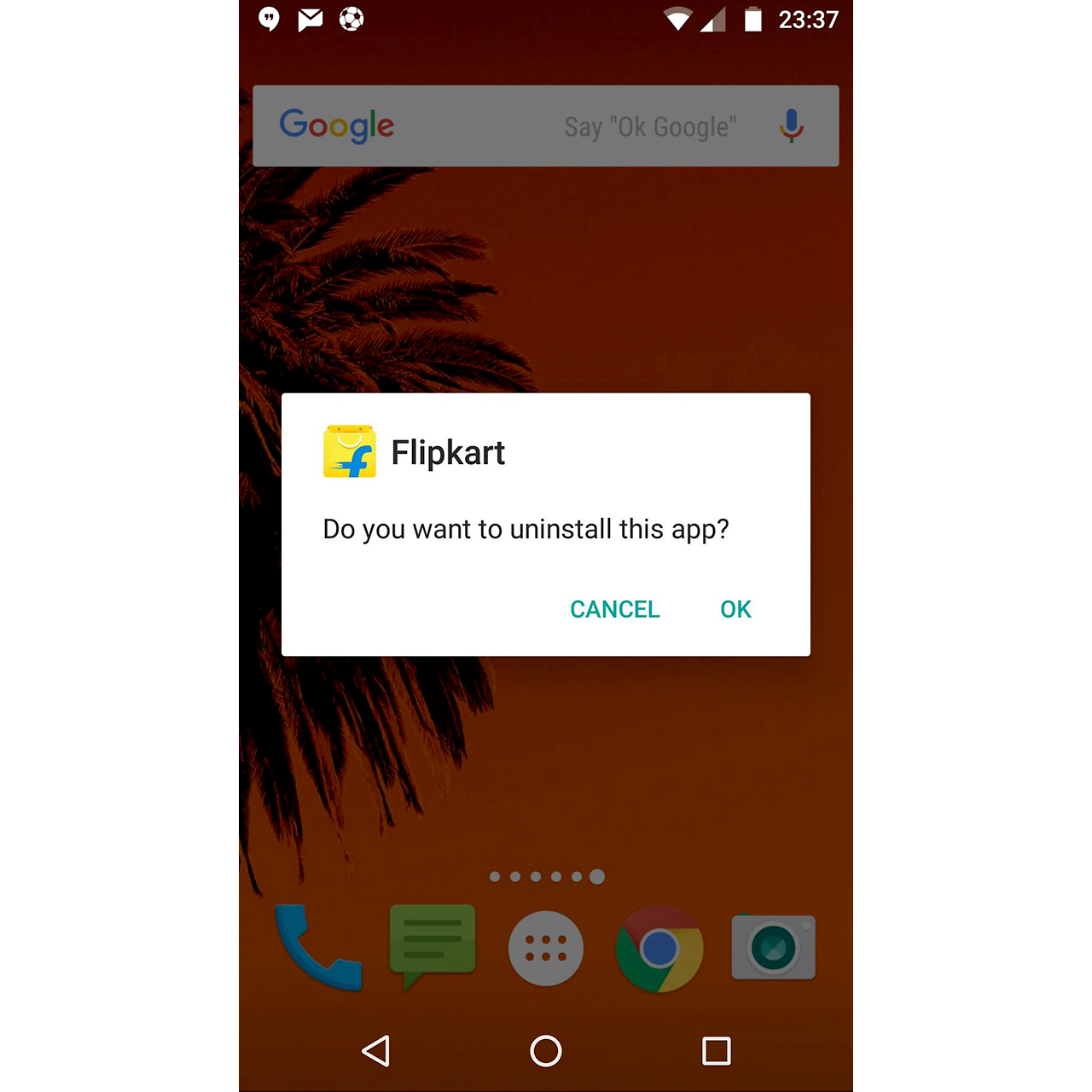
eCommerce sites depend on periodic sales events. These sales range from holiday sales to special non-holiday sales events. Amazon’s “Prime Day,” for example, does not coincide with any holiday or typical annual sale—like Black Friday—yet Amazon managed to make Prime Day 2016 its most successful shopping day ever, eclipsing the sales of Prime Day 2015 by more than 60% worldwide.
In 2015, Flipkart sold goods worth $300 million during “Big Billion Day,” its multi-day equivalent to Amazon’s Prime Day. During the first hour of the sale, Flipkart had almost 140 orders per second. Downloads of Flipkart’s mobile app go up significantly around Big Billion Day, because many of the offers are only available for mobile shoppers.
Along with the huge orders on Big Billion Day, we see a rise in the number of app uninstalls immediately after these sale events. Among consumers who download Flipkart’s mobile app before or during Big Billion Day, on average only about 30% have kept the app year after year since 2014. Users often stop using the mobile app once the sale is over, partly due to the storage constraints Indian mobile users face. (Many phone services limit customers to a total of twenty apps on mobile phones in India.) Consumers choose to keep apps that they use on a daily basis, like Facebook, WhatsApp, or YouTube.
We decided to dig deeper into various categories of apps and identify which are winners and losers with respect to customer loyalty:
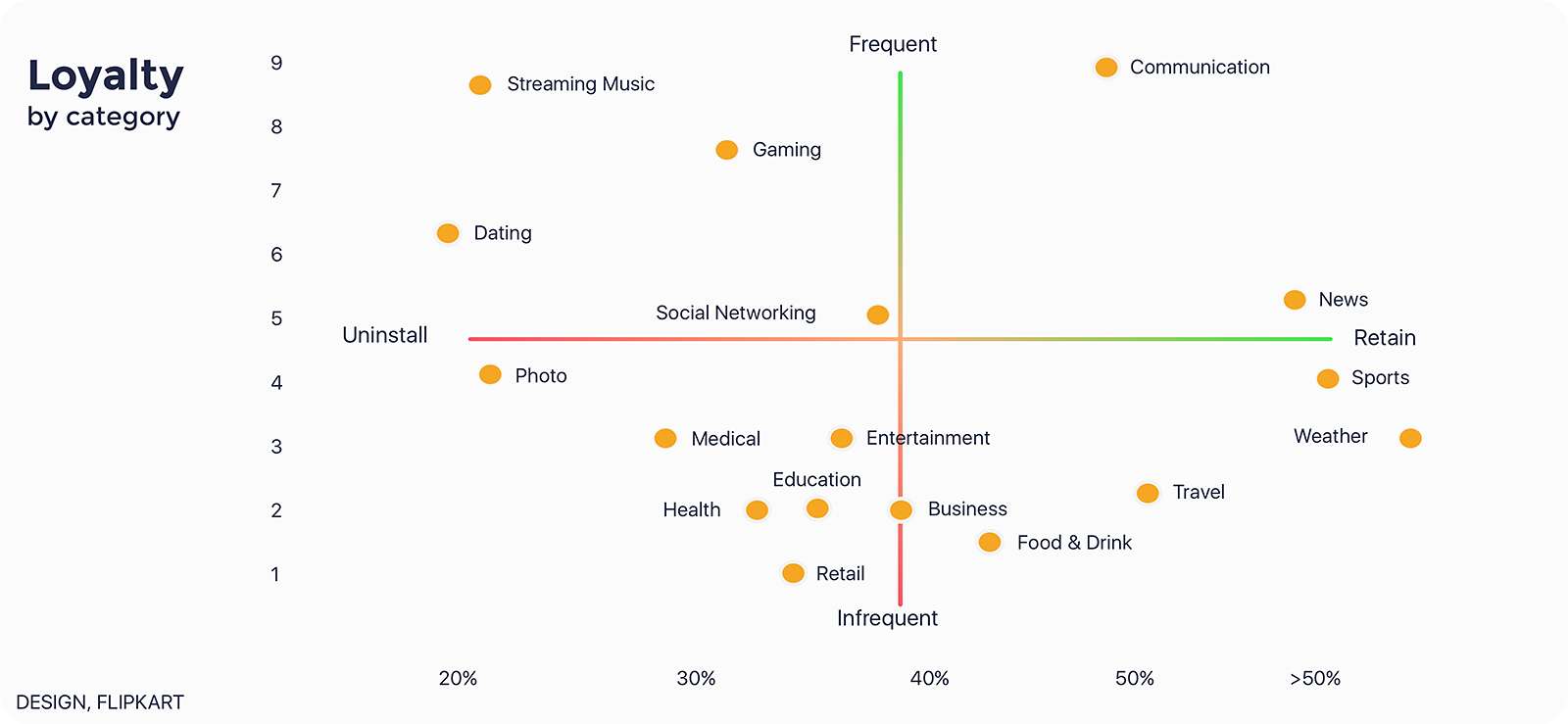
News, Sports, and Weather are among the leading categories for the “retain” end of the scale. Why? These all are habit-forming apps, meaning people keep coming back to them time after time. In order to move their app towards the “retain” zone, Flipkart needed to build a habit-forming app.
But what is a habit-forming app? To find out, we first needed to identify the challenges facing loyalty in eCommerce.
Challenge No. 2: Zero Loyalty
Habits are actions performed with little or no conscious thought. Research suggests that about 40% of what we do every day is done out of habit. We get hooked into doing things a certain way, and we rely on the consistency and comfort that our habits provide. For example, the video game industry has been using the “hook” concept to keep users coming back to play their games for years.
The principal of a “hook” tells us that a trigger causes us to take an action for which we experience a reward; that reward causes us to invest in the action that rewarded us, leading to more triggers and thus perpetuating the cycle.
It’s no secret that this is how animals are trained.

The hook starts with a trigger in the user’s environment. We are familiar with external triggers—i.e., notifications about products that interest us. However, internal triggers are more critical in helping form a lasting habit. We use many habitual activities throughout the day to escape our boredom or to sometimes get out of our negative emotional state and into our comfort zone. For example, we browse Facebook and Instagram in an attempt to elevate our mood by looking at cute puppy GIFs or funny cat videos.
FOMO
Each day when we wake up, many of us feel a fear of missing out (FOMO). If you check email, news, Facebook, Twitter, etc. first thing in the morning, then you know what’s going on in your world and therefore feel more connected. The Flipkart team saw an opportunity to utilize this internal trigger to initiate their hook.
The word FOMO (fear of missing out) was in fact added to the Oxford English Dictionary in 2013. Although the terminology has only recently been added to our lexicon, experiencing FOMO is nothing new.
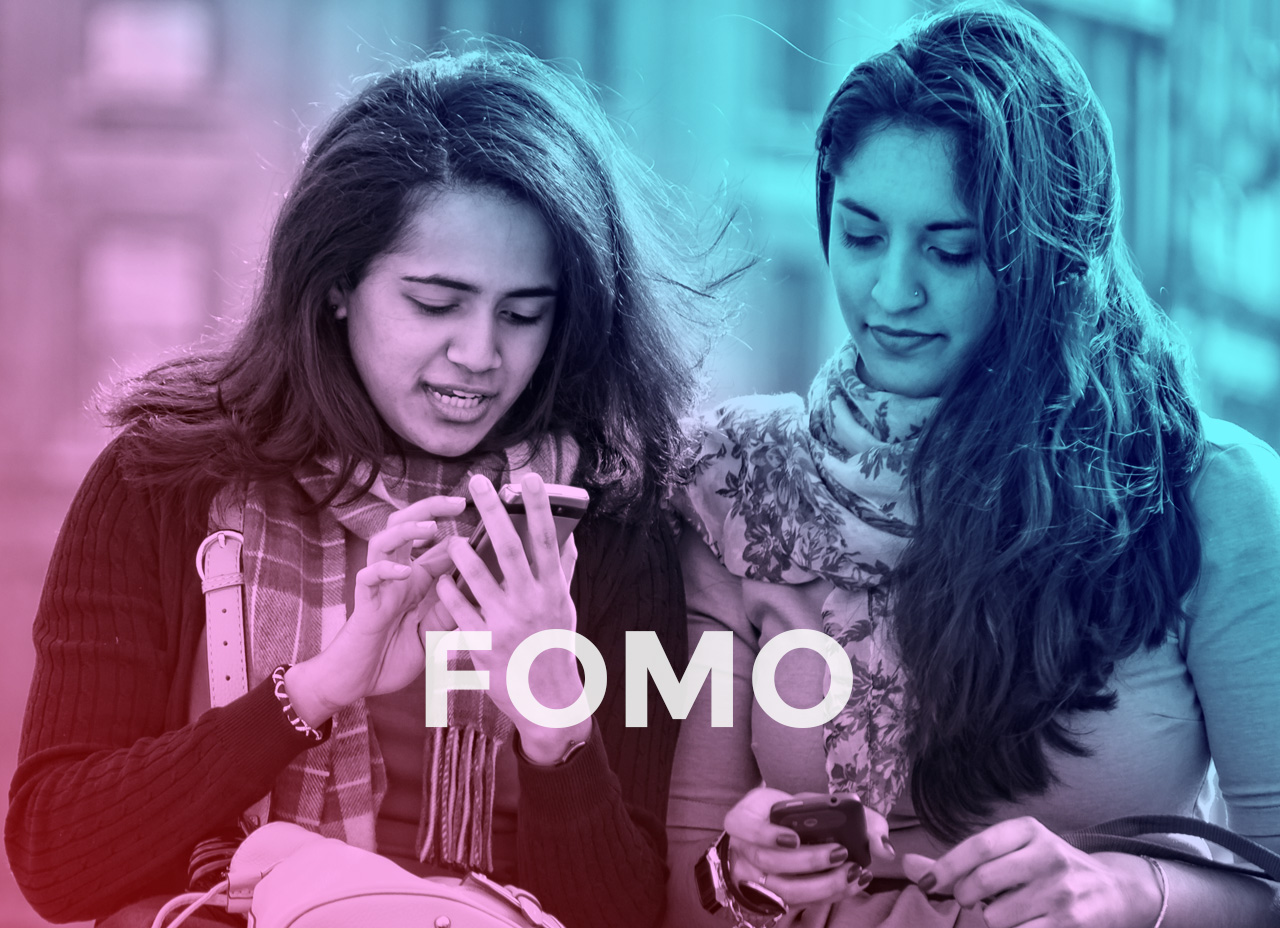
To create an effective hook, you need a viable UX pattern. And you need to recognize that traditional notifications may not work well because of their inherent issues; e.g., notification blindness.
Flipkart has more than 80 million products in 80+ categories, so it was important for them to categorize and tag the sea of products available and map them against users’ interests. Which led to the next challenge…
Relevance and Personalization
A number of Flipkart’s users were interviewed to understand when and how they shop online in general. It became evident that personalizing a shorter, more restrained feed with relevant products would be more engaging for them. We are all acquainted with how traditional recommendation systems work by crystallizing usage patterns and history. But for Flipkart, this would only partly solve the problem. We learned that users tend to shop according to two major themes:
- Intent: People search for specific products they have in mind. This showed that it is critical to capture and keep track of customer searches on an individual basis.
- Interest: A much broader behavior of ‘window shopping’ and browsing for products in various categories that the user likes, or falls within their interests. It’s much more about preferences and tendencies. For example, someone might have an interest in fitness, in backpacking, or be momentarily be browsing for a wedding gift. Flipkart also set out to capture those aspects of individual customer behavior.
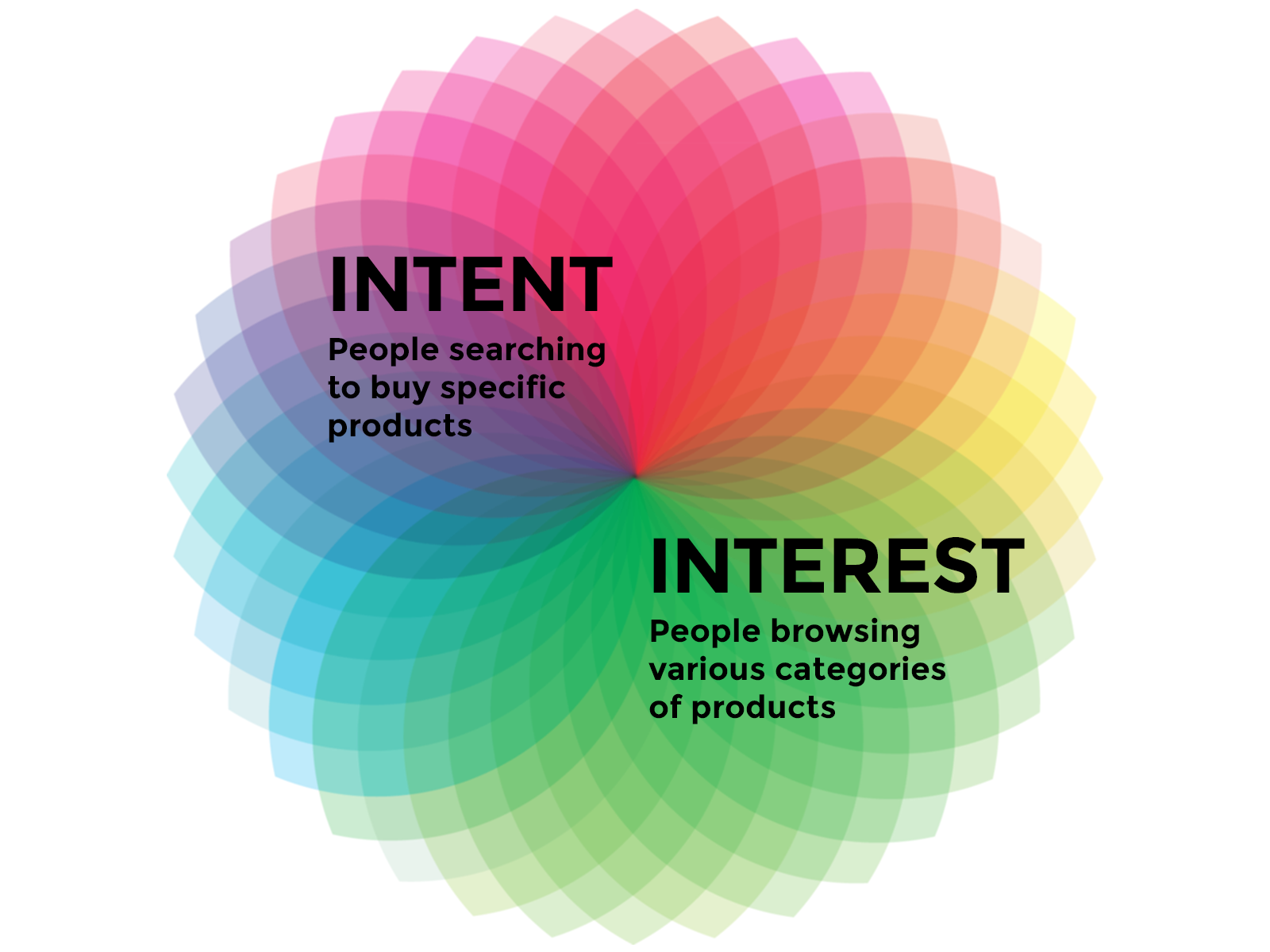
Taxonomy vs. Interconnected Themes
Reducing millions of products into a digestible feed of a handful of products, we needed to think through how to make products from various categories relevant to a customer.
Profiling users, we observed that shopping tends to happen in themes. We assigned a set of meta-tags to each product, with each tag becoming a point at which a pathway of products intersect, related by theme. Instead of grouping by categories and traditional sorting by taxonomy, we revised our approach and organized products into themes and stories.
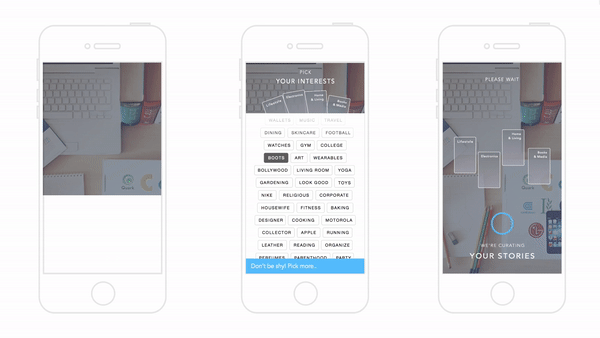
The resulting universe was a combination of strongly- and loosely-bound interconnected galaxies of products—serving both intent and interest-based shopping patterns—that was uniquely constructed for each user. Below is one such network for “Travel”:
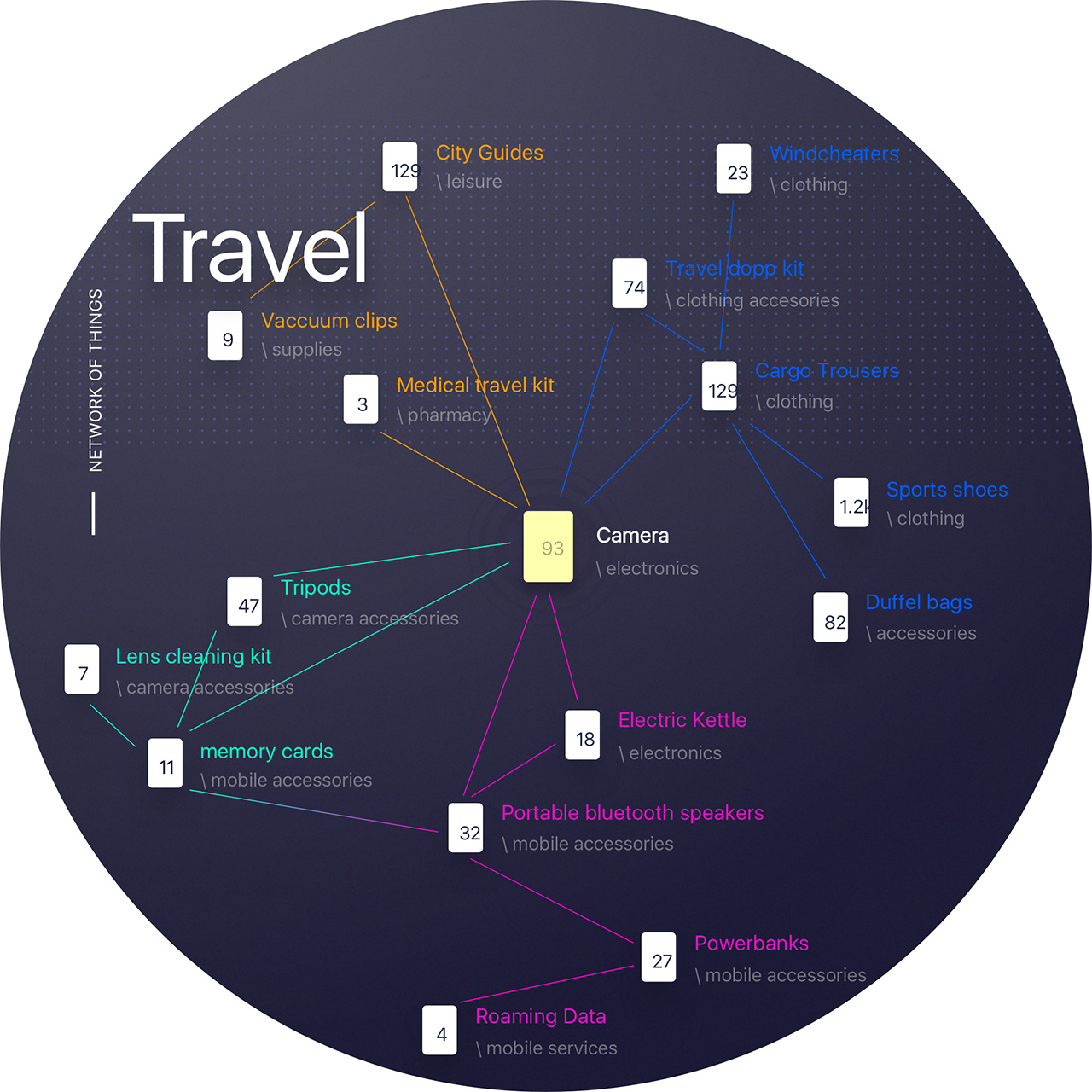
The company’s objective was to create a condition where, for example, a customer checks out a product and can explore related products in that story or theme as if traveling through that galaxy. This approach enabled the users to view a diverse set of products divided by their category, but united by a story or a theme.

The Solution: A Short Daily Digest
The Internet is vast and often seemingly endless. Today’s sophisticated consumers want information relevance, not information abundance. This meant Flipkart’s recommendation engine had to be rebuilt from the ground up.
Infinite vs. Finite Feed
We decided to build a daily digest of a limited number of products, refreshing the digest once each day. This meant that we had to move away from an endless product stream, which had often left the user in a state of decision paralysis, gotten stale quickly, and ended up becoming largely irrelevant and consequently ignored.
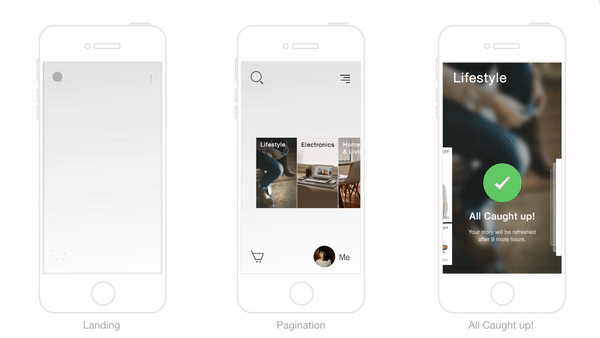
Working the Hook into a Successful Habit-forming Shopping Experience
At the heart of Flipkart’s solution lay a decision to use the “hook” concept to create a habit-forming user experience designed to draw customers to the eCommerce site.
We knew users would become attached to the anticipation of receiving a potential reward, and so we came up with the concept of a daily digest, which would be organized around themes and stories and individually personalized for each and every customer.
Flipkart’s path to a well-designed daily digest relied on becoming deeply familiar with the existing habits of their consumers. By understanding what drives consumers to shop, and presenting a finite number of deals that Flipkart knew would appeal to them, we were able to take advantage of their already ingrained mobile shopping habits.
Rather than trying to change consumer habits or convince them of Flipkart’s merits, we gave them a new resource to add to their existing, FOMO-driven behaviors.
Everyone in the eCommerce space is jockeying for a slice of what is predicted by 2020 to be a $4 trillion global market. Companies poised to come out on top will be those who successfully think outside the box and implement a different user experience strategy from the traditional one.
The future of eCommerce is in attracting customers with personalized, relevant recommendations built around user data, not in simply serving as a catalog of products and pushing the user toward products that sites want them to buy.
“The eCommerce of Tomorrow” — Video showcasing the final user experience

